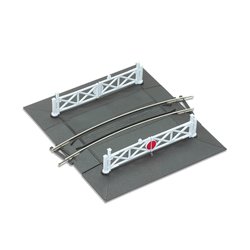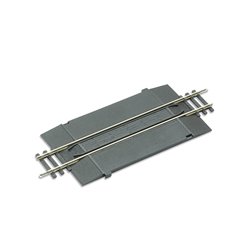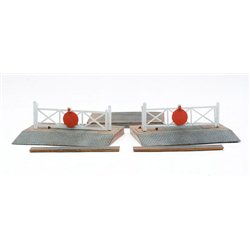There are a number of different options for attaching figures such as a horse and rider to a layout. Perhaps the...
Cart 0 Product Products (empty)
No products
Free shipping! Shipping
£ 0.00 Total
Product successfully added to your shopping cart
Quantity
Total
There are 0 items in your cart. There is 1 item in your cart.
Total products (tax incl.)
Total shipping (tax excl.) Free shipping!
Total (tax incl.)
Search Tips
Where would I generally place a level-crossing on my layout?
When planning the placement of a level crossing on a model railway layout, there are a few factors to consider. The location of a level crossing can add realism and interest to the layout, as well as provide a functional scene element for the operation of the layout's trains. Here are some guidelines to help decide where to place a level crossing :
- Road or track intersection : level crossings are typically placed where a road or path intersects at the same height with a railway track. This creates a realistic scenario where vehicles and trains can interact. Consider the configuration of the Layout's tracks and roads to find a suitable location for the level crossing.
- Visibility : it is important to ensure good visibility for both train operators and road users at the level crossing. Avoid placing the crossing on a sharp curve of road or track or where there are objects that could obstruct the view for either party. This will better reflect the placement of a level-crossing in the real world.
- Access points : level crossings often serve as access points for vehicles to cross the tracks. Consider placing the level crossing near buildings or areas where people would need to cross the tracks. This will add authenticity to the layout and make it more engaging. This could be a main road in an urban setting or a cattle or livestock crossing in a rural environment.
- Safety measures : in real life, level crossings have safety measures such as barriers, lights and warning signs. These safety features can be added to the layout to enhance realism. Ensure there is enough space to accommodate these safety features when choosing the location for the level crossing.
- Scale considerations : the scale of the layout will also influence the placement of the level crossing. Different scales, such as OO/HO, N and TT have different track spacing and dimensions. Consider the scale of the layout and ensure that the level crossing fits proportionally with the rest of the scenery.
By considering these factors, it will be possible to identify a suitable location for a level crossing on a layout. Remember to plan ahead and make adjustments as needed to ensure that the level crossing is not only functional but also realistically positioned.
Posted in: Scenery
Click here to receive the tips weekly in your mailbox. You can unsubscribe at any time.










